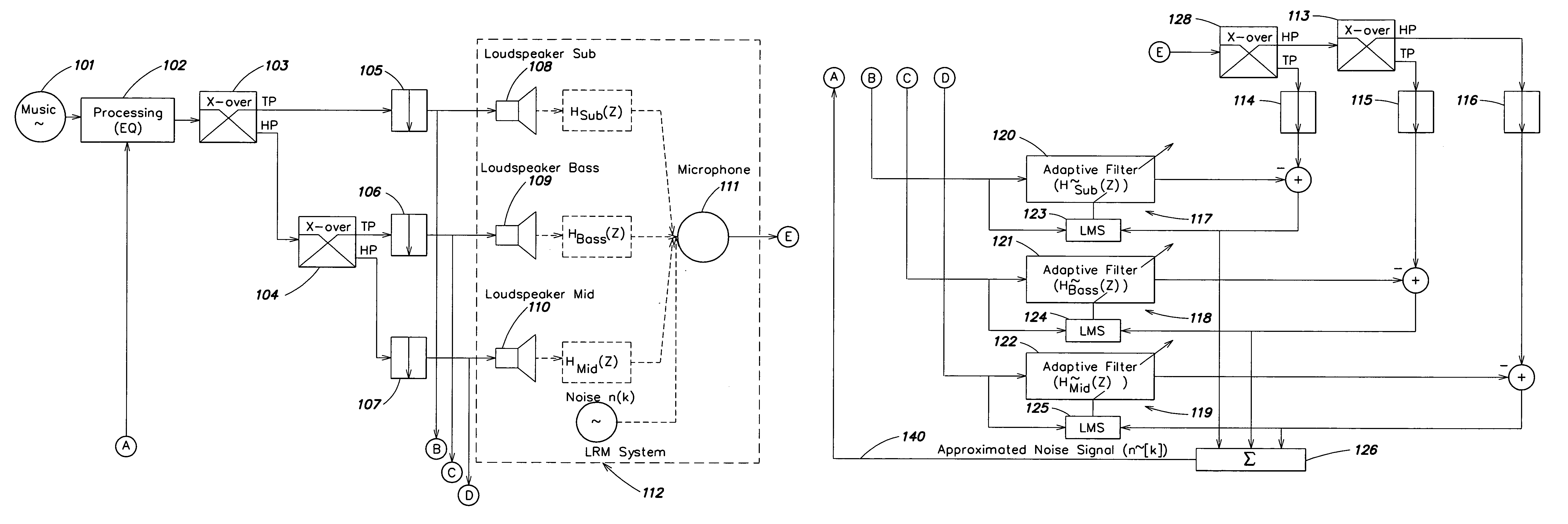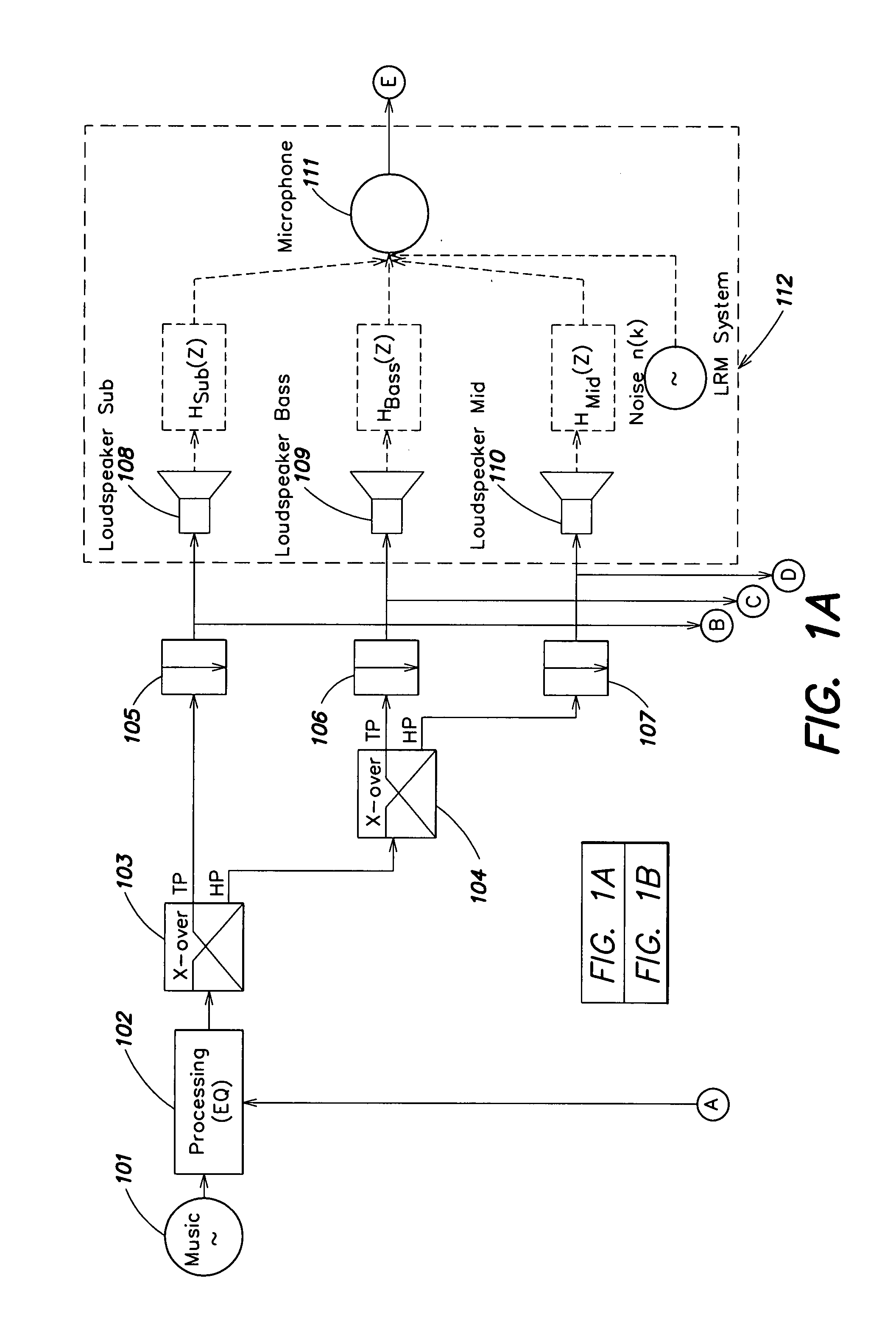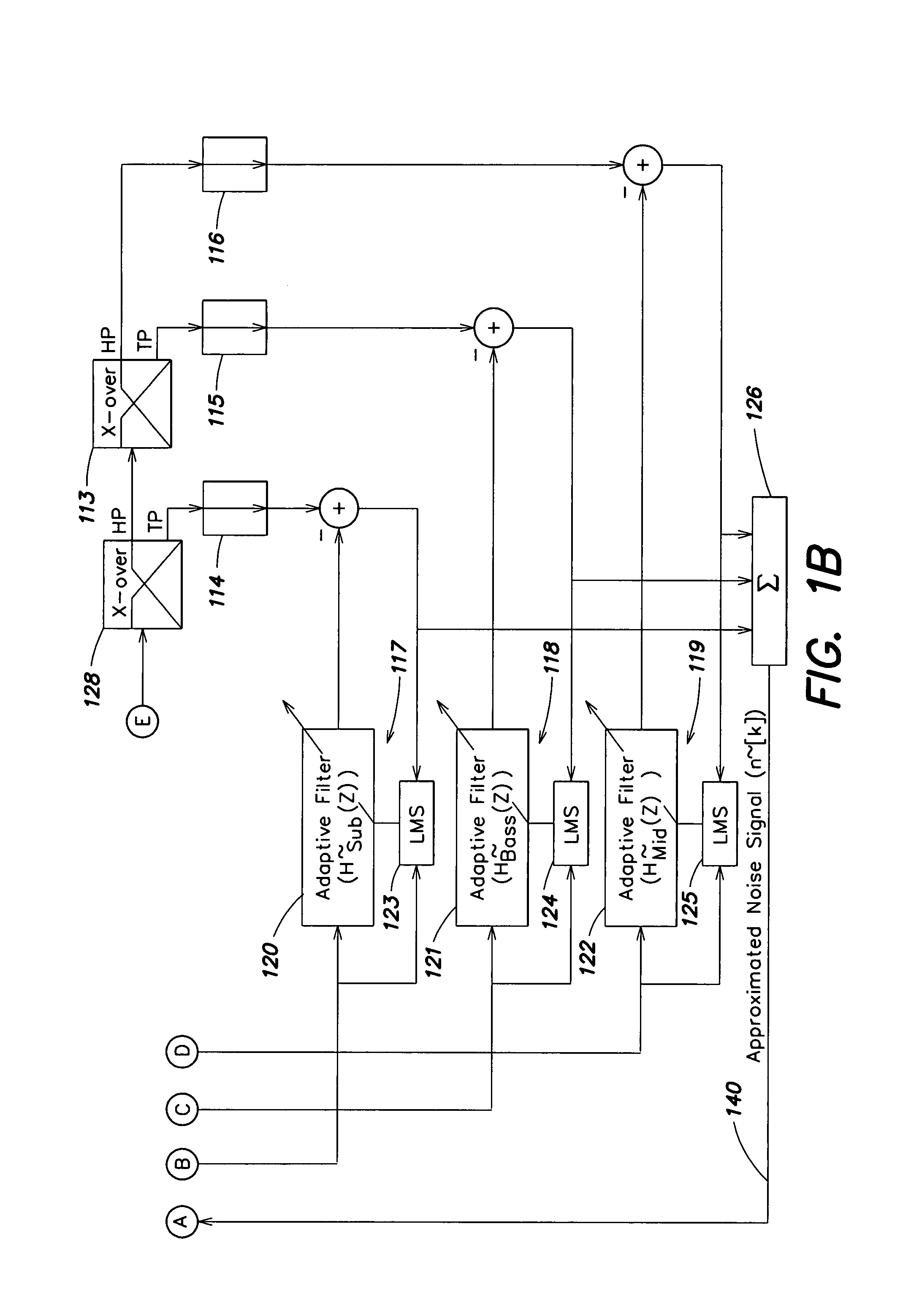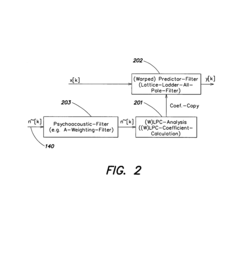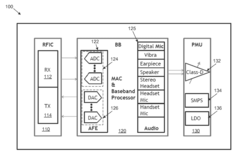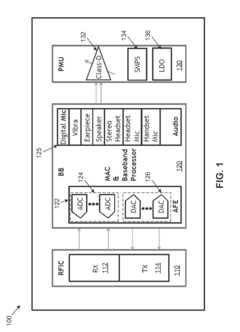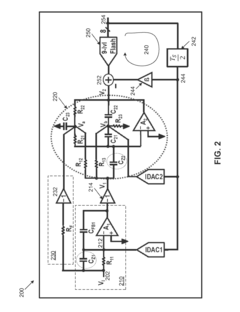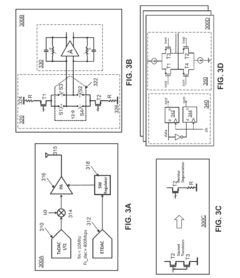How LDAC Supports Future-Proof Audio Solutions?
JUL 4, 20258 MIN READ
Generate Your Research Report Instantly with AI Agent
Patsnap Eureka helps you evaluate technical feasibility & market potential.
LDAC Technology Overview
LDAC, developed by Sony, is a cutting-edge audio coding technology designed to deliver high-resolution audio over Bluetooth connections. This proprietary codec represents a significant advancement in wireless audio transmission, offering a bitrate of up to 990 kbps, which is substantially higher than conventional Bluetooth codecs like SBC or AAC.
The technology utilizes adaptive bit rate allocation to optimize audio quality based on the available wireless bandwidth. This dynamic adjustment ensures that LDAC can maintain the best possible sound quality even in challenging wireless environments. By employing sophisticated encoding algorithms, LDAC can preserve more audio information compared to traditional codecs, resulting in a listening experience that closely resembles wired high-resolution audio.
One of LDAC's key features is its ability to support 24-bit/96kHz audio transmission wirelessly. This capability allows for the reproduction of frequencies up to 40 kHz, extending well beyond the range of human hearing and preserving the subtle nuances of high-resolution audio recordings. The codec's efficient compression techniques minimize data loss while maximizing the use of available bandwidth.
LDAC operates in three modes: 330 kbps, 660 kbps, and 990 kbps. These modes offer flexibility in balancing audio quality with connection stability, adapting to various usage scenarios and device capabilities. The highest quality 990 kbps mode can transmit approximately three times more data than conventional Bluetooth audio codecs, significantly reducing the compromise between wireless convenience and audio fidelity.
The technology's integration into the Android Open Source Project (AOSP) has expanded its availability beyond Sony devices, making it accessible to a wider range of smartphones and audio equipment. This broader adoption has positioned LDAC as a leading solution for high-quality wireless audio transmission in the consumer electronics market.
LDAC's advanced error correction and concealment techniques contribute to its robustness in real-world conditions. These features help maintain audio quality and connection stability even in environments with potential interference, ensuring a consistent listening experience for users.
As the demand for high-resolution audio content grows, LDAC plays a crucial role in bridging the gap between wired and wireless audio quality. Its ability to transmit near-lossless audio over Bluetooth addresses the increasing consumer expectations for superior sound quality in portable and wireless audio devices.
The technology utilizes adaptive bit rate allocation to optimize audio quality based on the available wireless bandwidth. This dynamic adjustment ensures that LDAC can maintain the best possible sound quality even in challenging wireless environments. By employing sophisticated encoding algorithms, LDAC can preserve more audio information compared to traditional codecs, resulting in a listening experience that closely resembles wired high-resolution audio.
One of LDAC's key features is its ability to support 24-bit/96kHz audio transmission wirelessly. This capability allows for the reproduction of frequencies up to 40 kHz, extending well beyond the range of human hearing and preserving the subtle nuances of high-resolution audio recordings. The codec's efficient compression techniques minimize data loss while maximizing the use of available bandwidth.
LDAC operates in three modes: 330 kbps, 660 kbps, and 990 kbps. These modes offer flexibility in balancing audio quality with connection stability, adapting to various usage scenarios and device capabilities. The highest quality 990 kbps mode can transmit approximately three times more data than conventional Bluetooth audio codecs, significantly reducing the compromise between wireless convenience and audio fidelity.
The technology's integration into the Android Open Source Project (AOSP) has expanded its availability beyond Sony devices, making it accessible to a wider range of smartphones and audio equipment. This broader adoption has positioned LDAC as a leading solution for high-quality wireless audio transmission in the consumer electronics market.
LDAC's advanced error correction and concealment techniques contribute to its robustness in real-world conditions. These features help maintain audio quality and connection stability even in environments with potential interference, ensuring a consistent listening experience for users.
As the demand for high-resolution audio content grows, LDAC plays a crucial role in bridging the gap between wired and wireless audio quality. Its ability to transmit near-lossless audio over Bluetooth addresses the increasing consumer expectations for superior sound quality in portable and wireless audio devices.
Audio Market Trends
The audio market has been experiencing significant growth and transformation in recent years, driven by technological advancements and changing consumer preferences. The global audio market size was valued at $20.3 billion in 2020 and is projected to reach $31.5 billion by 2026, growing at a CAGR of 7.8% during the forecast period. This growth is primarily attributed to the increasing demand for wireless audio devices, smart speakers, and high-quality audio solutions.
One of the most notable trends in the audio market is the shift towards wireless audio technologies. Bluetooth-enabled devices, including headphones, earbuds, and speakers, have gained immense popularity due to their convenience and improved audio quality. The wireless audio segment is expected to dominate the market, with a projected market share of over 60% by 2026.
Another significant trend is the rising demand for high-resolution audio (HRA) solutions. Consumers are increasingly seeking premium audio experiences, driving the adoption of advanced audio codecs and technologies. This trend has led to the development of new audio formats and codecs, such as LDAC, which aim to deliver near-lossless audio quality over Bluetooth connections.
The smart speaker market has also witnessed substantial growth, with voice-controlled devices becoming increasingly prevalent in households. Major tech companies like Amazon, Google, and Apple have invested heavily in this segment, integrating artificial intelligence and voice recognition technologies to enhance user experiences.
In the professional audio sector, there is a growing demand for advanced audio solutions in various industries, including entertainment, education, and corporate environments. This has led to the development of sophisticated audio processing technologies and immersive sound systems, such as spatial audio and object-based audio formats.
The automotive audio market is another area experiencing significant growth, driven by the increasing integration of advanced infotainment systems in vehicles. Manufacturers are focusing on developing premium audio systems that offer immersive sound experiences, noise cancellation, and seamless connectivity with mobile devices.
The COVID-19 pandemic has also influenced audio market trends, with a surge in demand for home audio equipment and headphones due to remote work and increased digital content consumption. This shift has accelerated the adoption of high-quality audio solutions for both professional and personal use.
As the audio market continues to evolve, there is a growing emphasis on sustainability and eco-friendly audio products. Manufacturers are exploring the use of recycled materials and developing energy-efficient audio solutions to appeal to environmentally conscious consumers.
One of the most notable trends in the audio market is the shift towards wireless audio technologies. Bluetooth-enabled devices, including headphones, earbuds, and speakers, have gained immense popularity due to their convenience and improved audio quality. The wireless audio segment is expected to dominate the market, with a projected market share of over 60% by 2026.
Another significant trend is the rising demand for high-resolution audio (HRA) solutions. Consumers are increasingly seeking premium audio experiences, driving the adoption of advanced audio codecs and technologies. This trend has led to the development of new audio formats and codecs, such as LDAC, which aim to deliver near-lossless audio quality over Bluetooth connections.
The smart speaker market has also witnessed substantial growth, with voice-controlled devices becoming increasingly prevalent in households. Major tech companies like Amazon, Google, and Apple have invested heavily in this segment, integrating artificial intelligence and voice recognition technologies to enhance user experiences.
In the professional audio sector, there is a growing demand for advanced audio solutions in various industries, including entertainment, education, and corporate environments. This has led to the development of sophisticated audio processing technologies and immersive sound systems, such as spatial audio and object-based audio formats.
The automotive audio market is another area experiencing significant growth, driven by the increasing integration of advanced infotainment systems in vehicles. Manufacturers are focusing on developing premium audio systems that offer immersive sound experiences, noise cancellation, and seamless connectivity with mobile devices.
The COVID-19 pandemic has also influenced audio market trends, with a surge in demand for home audio equipment and headphones due to remote work and increased digital content consumption. This shift has accelerated the adoption of high-quality audio solutions for both professional and personal use.
As the audio market continues to evolve, there is a growing emphasis on sustainability and eco-friendly audio products. Manufacturers are exploring the use of recycled materials and developing energy-efficient audio solutions to appeal to environmentally conscious consumers.
LDAC Technical Challenges
LDAC, as an advanced audio codec technology, faces several technical challenges in its quest to provide future-proof audio solutions. One of the primary hurdles is maintaining high-quality audio transmission while optimizing bandwidth usage. LDAC aims to deliver near-lossless audio quality over Bluetooth connections, which inherently have limited bandwidth. This necessitates sophisticated compression algorithms that can efficiently encode audio data without significant loss in quality.
Another challenge lies in ensuring compatibility across a wide range of devices and platforms. As the audio ecosystem continues to evolve, LDAC must adapt to new hardware specifications and software environments. This includes supporting various audio formats, bit depths, and sampling rates, while also maintaining backward compatibility with existing devices.
Latency reduction is a critical area of focus for LDAC. In applications such as gaming and virtual reality, minimizing audio delay is crucial for a seamless user experience. LDAC must continually improve its encoding and decoding processes to reduce latency without compromising audio quality or increasing power consumption.
Power efficiency presents another significant challenge. As LDAC is primarily used in mobile and wireless devices, it must balance high-quality audio processing with energy conservation. This requires ongoing optimization of the codec's algorithms and implementation to minimize battery drain on both transmitting and receiving devices.
Scalability is an essential consideration for LDAC's future-proofing capabilities. The codec must be able to adapt to varying network conditions and device capabilities, dynamically adjusting its performance to deliver the best possible audio quality under different circumstances. This includes developing intelligent switching mechanisms between different bitrates and compression levels.
Furthermore, LDAC faces the challenge of integrating with emerging audio technologies such as 3D audio, object-based audio, and adaptive sound fields. As these technologies become more prevalent in consumer devices, LDAC must evolve to support these advanced audio features while maintaining its core strengths in high-resolution audio transmission.
Lastly, LDAC must address the challenge of standardization and widespread adoption. While it offers superior audio quality compared to many other Bluetooth codecs, its proprietary nature can limit its integration across different manufacturers and platforms. Overcoming this challenge requires strategic partnerships and potentially opening up the technology for broader industry adoption.
Another challenge lies in ensuring compatibility across a wide range of devices and platforms. As the audio ecosystem continues to evolve, LDAC must adapt to new hardware specifications and software environments. This includes supporting various audio formats, bit depths, and sampling rates, while also maintaining backward compatibility with existing devices.
Latency reduction is a critical area of focus for LDAC. In applications such as gaming and virtual reality, minimizing audio delay is crucial for a seamless user experience. LDAC must continually improve its encoding and decoding processes to reduce latency without compromising audio quality or increasing power consumption.
Power efficiency presents another significant challenge. As LDAC is primarily used in mobile and wireless devices, it must balance high-quality audio processing with energy conservation. This requires ongoing optimization of the codec's algorithms and implementation to minimize battery drain on both transmitting and receiving devices.
Scalability is an essential consideration for LDAC's future-proofing capabilities. The codec must be able to adapt to varying network conditions and device capabilities, dynamically adjusting its performance to deliver the best possible audio quality under different circumstances. This includes developing intelligent switching mechanisms between different bitrates and compression levels.
Furthermore, LDAC faces the challenge of integrating with emerging audio technologies such as 3D audio, object-based audio, and adaptive sound fields. As these technologies become more prevalent in consumer devices, LDAC must evolve to support these advanced audio features while maintaining its core strengths in high-resolution audio transmission.
Lastly, LDAC must address the challenge of standardization and widespread adoption. While it offers superior audio quality compared to many other Bluetooth codecs, its proprietary nature can limit its integration across different manufacturers and platforms. Overcoming this challenge requires strategic partnerships and potentially opening up the technology for broader industry adoption.
Current LDAC Solutions
01 LDAC codec implementation for high-quality audio transmission
LDAC is a high-resolution audio codec developed for Bluetooth audio transmission. It enables the transfer of high-quality audio data over Bluetooth connections, offering better sound quality compared to standard codecs. LDAC supports various bit rates and can adapt to different network conditions to maintain optimal audio quality.- LDAC codec implementation for high-quality audio transmission: LDAC is a high-resolution audio codec developed for Bluetooth audio transmission. It enables the transfer of high-quality audio data at higher bit rates compared to standard codecs. The implementation of LDAC in audio devices can significantly improve the overall audio quality, providing a near-lossless listening experience for users.
- Audio signal processing and enhancement for LDAC: Various signal processing techniques are employed to optimize audio quality when using LDAC. These may include advanced noise reduction, dynamic range compression, and equalization algorithms. Such processing helps to maintain high audio fidelity while adapting to different listening environments and device capabilities.
- Integration of LDAC with audio streaming services and devices: LDAC technology is integrated into various audio streaming services and devices to provide high-quality audio experiences. This integration involves optimizing the codec for different types of content, ensuring compatibility with various hardware configurations, and implementing efficient data transmission protocols.
- LDAC performance optimization and power efficiency: Efforts are made to optimize LDAC performance while maintaining power efficiency, especially for mobile devices. This includes developing adaptive bit rate algorithms, implementing efficient encoding/decoding processes, and balancing audio quality with battery consumption to provide an optimal user experience.
- Quality assessment and testing methods for LDAC audio: Specialized quality assessment and testing methods are developed to evaluate LDAC audio performance. These may include objective measurements of audio fidelity, subjective listening tests, and comparative analyses with other audio codecs. Such methods ensure that LDAC maintains its high-quality standards across different implementations and use cases.
02 Audio quality enhancement through signal processing
Various signal processing techniques are employed to enhance audio quality in LDAC systems. These may include noise reduction, dynamic range compression, and frequency response correction. Advanced algorithms are used to optimize the audio signal before encoding and after decoding to maintain high fidelity throughout the transmission process.Expand Specific Solutions03 Adaptive bit rate and sampling frequency selection
LDAC systems can dynamically adjust bit rates and sampling frequencies based on network conditions and device capabilities. This adaptive approach ensures optimal audio quality while maintaining stable connections. The system can switch between different quality modes to balance between audio fidelity and connection stability.Expand Specific Solutions04 Integration with audio playback devices and systems
LDAC technology is integrated into various audio playback devices and systems, including smartphones, headphones, and home audio equipment. This integration allows for seamless high-quality audio streaming across different platforms and devices, enhancing the overall user experience in audio consumption.Expand Specific Solutions05 Error correction and packet loss concealment
To maintain high audio quality over potentially unstable Bluetooth connections, LDAC systems incorporate error correction and packet loss concealment techniques. These methods help to minimize audio artifacts and maintain a consistent listening experience even in challenging wireless environments.Expand Specific Solutions
Key LDAC Industry Players
The LDAC (Low Latency and High-Quality Audio Codec) technology is currently in a growth phase, with the market for high-quality wireless audio solutions expanding rapidly. The global wireless audio market size is projected to reach significant figures in the coming years, driven by increasing demand for premium audio experiences. LDAC's technical maturity is advancing, with major players like Sony (developer of LDAC), Samsung Electronics, and Apple leading the way in implementation. Other key contributors include Fraunhofer-Gesellschaft, Harman Becker Automotive Systems, and LG Electronics, who are actively developing and integrating LDAC into their products. The technology's adoption across various devices and platforms indicates its growing importance in the audio industry, positioning LDAC as a future-proof solution for high-fidelity wireless audio transmission.
Samsung Electronics Co., Ltd.
Technical Solution: Samsung has embraced LDAC technology in its Galaxy series smartphones and wireless audio devices. The company's implementation focuses on maximizing audio quality while ensuring compatibility with a wide range of devices. Samsung has developed a custom DSP (Digital Signal Processor) that works in tandem with LDAC to enhance audio processing and reduce power consumption[2]. This approach allows for real-time audio optimization, adapting to different music genres and listening environments. Samsung has also integrated LDAC with its Scalable Codec technology, enabling seamless switching between codecs based on wireless connection quality and device capabilities[4].
Strengths: Wide device compatibility, custom DSP for enhanced audio processing, integration with Scalable Codec technology. Weaknesses: Potential complexity in implementation, may require specific hardware for optimal performance.
Apple, Inc.
Technical Solution: Apple has integrated LDAC support into its products, particularly in its AirPods lineup. The company's implementation of LDAC focuses on optimizing the codec for low-latency performance while maintaining high-quality audio transmission. Apple's approach involves adaptive bitrate switching, allowing the codec to adjust dynamically based on network conditions and device capabilities[1]. This ensures a consistent, high-quality audio experience across various Apple devices and third-party LDAC-compatible products. Additionally, Apple has worked on enhancing LDAC's energy efficiency, crucial for battery-powered devices like wireless earbuds and smartphones[3].
Strengths: Seamless integration with Apple ecosystem, optimized for low-latency performance, and adaptive bitrate switching. Weaknesses: Limited to Apple devices, potentially less flexible than open-source alternatives.
LDAC Core Innovations
Audio enhancement system
PatentInactiveUS7302062B2
Innovation
- A dynamic equalizer control system that uses linear predictive coding (LPC) to analyze ambient noise and adjust sound output, considering the spectral distribution of noise and psychoacoustic aspects, to enhance the audio listening experience by boosting music levels and controlling gain and equalization accordingly.
Analog and audio mixed-signal front end for 4g/LTE cellular system-on-chip
PatentActiveUS20150194979A1
Innovation
- The integration of a CMOS cellular system-on-chip (SoC) with an embedded analog front-end (AFE) and enhanced audio capabilities, utilizing a wideband sigma-delta architecture for analog-to-digital converters (ADCs) and push-pull digital-to-analog converters (DACs), along with optimized filter structures and power management units, to achieve high signal-to-noise-and-distortion ratio (SNDR) and reduce power consumption.
LDAC Ecosystem Integration
LDAC's ecosystem integration is a crucial aspect of its ability to support future-proof audio solutions. The technology's widespread adoption across various devices and platforms has created a robust ecosystem that enhances its value proposition for consumers and manufacturers alike.
At the core of LDAC's ecosystem integration is its compatibility with a wide range of audio devices. This includes smartphones, tablets, wireless headphones, speakers, and car audio systems. Major smartphone manufacturers, such as Sony, LG, and Huawei, have incorporated LDAC support into their devices, ensuring a seamless high-quality audio experience for users.
The integration of LDAC into the Android operating system has been a significant milestone for the technology's ecosystem expansion. Since Android 8.0 (Oreo), LDAC has been natively supported, allowing any Android device running this version or later to potentially utilize the codec. This broad compatibility has encouraged more manufacturers to adopt LDAC in their audio products, further strengthening the ecosystem.
LDAC's ecosystem also extends to various music streaming services and audio applications. Many popular streaming platforms have optimized their audio output to take advantage of LDAC's high-bitrate capabilities when available. This integration ensures that users can enjoy the full potential of their LDAC-enabled devices across different content sources.
The technology's presence in the professional audio sector has also contributed to its ecosystem growth. LDAC has been adopted in professional-grade audio equipment, studio monitors, and broadcasting systems. This cross-industry integration helps maintain high audio quality standards throughout the production and consumption chain.
LDAC's ecosystem benefits from ongoing development and support from Sony and its partners. Regular firmware updates and improvements to the codec ensure that the technology remains relevant and competitive in the rapidly evolving audio landscape. This commitment to continuous enhancement helps future-proof LDAC-enabled devices and maintains the ecosystem's vitality.
The growing ecosystem around LDAC has also fostered a community of audio enthusiasts and developers. Online forums, user groups, and developer resources have emerged, facilitating knowledge sharing and driving innovation in LDAC-related applications and products. This community engagement further solidifies LDAC's position in the audio technology market.
At the core of LDAC's ecosystem integration is its compatibility with a wide range of audio devices. This includes smartphones, tablets, wireless headphones, speakers, and car audio systems. Major smartphone manufacturers, such as Sony, LG, and Huawei, have incorporated LDAC support into their devices, ensuring a seamless high-quality audio experience for users.
The integration of LDAC into the Android operating system has been a significant milestone for the technology's ecosystem expansion. Since Android 8.0 (Oreo), LDAC has been natively supported, allowing any Android device running this version or later to potentially utilize the codec. This broad compatibility has encouraged more manufacturers to adopt LDAC in their audio products, further strengthening the ecosystem.
LDAC's ecosystem also extends to various music streaming services and audio applications. Many popular streaming platforms have optimized their audio output to take advantage of LDAC's high-bitrate capabilities when available. This integration ensures that users can enjoy the full potential of their LDAC-enabled devices across different content sources.
The technology's presence in the professional audio sector has also contributed to its ecosystem growth. LDAC has been adopted in professional-grade audio equipment, studio monitors, and broadcasting systems. This cross-industry integration helps maintain high audio quality standards throughout the production and consumption chain.
LDAC's ecosystem benefits from ongoing development and support from Sony and its partners. Regular firmware updates and improvements to the codec ensure that the technology remains relevant and competitive in the rapidly evolving audio landscape. This commitment to continuous enhancement helps future-proof LDAC-enabled devices and maintains the ecosystem's vitality.
The growing ecosystem around LDAC has also fostered a community of audio enthusiasts and developers. Online forums, user groups, and developer resources have emerged, facilitating knowledge sharing and driving innovation in LDAC-related applications and products. This community engagement further solidifies LDAC's position in the audio technology market.
LDAC Standardization Efforts
LDAC's standardization efforts have been a crucial aspect of its development and widespread adoption in the audio industry. The process began with Sony's initial development of LDAC as a proprietary codec, but the company recognized the importance of standardization for broader acceptance and implementation.
In 2015, Sony submitted LDAC to the Bluetooth Special Interest Group (SIG) for consideration as a standard audio codec. This move was significant as it demonstrated Sony's commitment to making LDAC an open standard rather than keeping it as a proprietary technology. The Bluetooth SIG, responsible for overseeing the development of Bluetooth standards, initiated a thorough review process of LDAC's technical specifications and performance capabilities.
Following extensive evaluation and testing, LDAC was officially adopted as part of the Bluetooth standard in 2017. This standardization marked a pivotal moment for LDAC, as it became one of the official high-quality audio codecs supported by the Bluetooth specification. The inclusion in the Bluetooth standard significantly increased LDAC's accessibility and potential for widespread implementation across various devices and platforms.
The standardization process also involved the development of comprehensive documentation and guidelines for implementing LDAC in Bluetooth-enabled devices. These resources were made available to manufacturers and developers, facilitating the integration of LDAC into a wide range of audio products, including smartphones, headphones, and speakers.
As part of the standardization efforts, Sony worked closely with other industry players to ensure interoperability and compatibility. This collaboration was essential in addressing potential technical challenges and ensuring seamless integration of LDAC across different hardware and software environments.
The standardization of LDAC has had far-reaching implications for the audio industry. It has enabled manufacturers to incorporate high-quality audio capabilities into their products without the need for proprietary licensing agreements. This openness has fostered innovation and competition in the market, ultimately benefiting consumers with a wider range of high-quality audio options.
Furthermore, LDAC's standardization has contributed to its recognition as a future-proof audio solution. By adhering to established industry standards, LDAC ensures long-term compatibility and relevance in the evolving landscape of wireless audio technology. This standardization also provides a solid foundation for future enhancements and iterations of the codec, allowing it to adapt to emerging audio requirements and technological advancements.
In 2015, Sony submitted LDAC to the Bluetooth Special Interest Group (SIG) for consideration as a standard audio codec. This move was significant as it demonstrated Sony's commitment to making LDAC an open standard rather than keeping it as a proprietary technology. The Bluetooth SIG, responsible for overseeing the development of Bluetooth standards, initiated a thorough review process of LDAC's technical specifications and performance capabilities.
Following extensive evaluation and testing, LDAC was officially adopted as part of the Bluetooth standard in 2017. This standardization marked a pivotal moment for LDAC, as it became one of the official high-quality audio codecs supported by the Bluetooth specification. The inclusion in the Bluetooth standard significantly increased LDAC's accessibility and potential for widespread implementation across various devices and platforms.
The standardization process also involved the development of comprehensive documentation and guidelines for implementing LDAC in Bluetooth-enabled devices. These resources were made available to manufacturers and developers, facilitating the integration of LDAC into a wide range of audio products, including smartphones, headphones, and speakers.
As part of the standardization efforts, Sony worked closely with other industry players to ensure interoperability and compatibility. This collaboration was essential in addressing potential technical challenges and ensuring seamless integration of LDAC across different hardware and software environments.
The standardization of LDAC has had far-reaching implications for the audio industry. It has enabled manufacturers to incorporate high-quality audio capabilities into their products without the need for proprietary licensing agreements. This openness has fostered innovation and competition in the market, ultimately benefiting consumers with a wider range of high-quality audio options.
Furthermore, LDAC's standardization has contributed to its recognition as a future-proof audio solution. By adhering to established industry standards, LDAC ensures long-term compatibility and relevance in the evolving landscape of wireless audio technology. This standardization also provides a solid foundation for future enhancements and iterations of the codec, allowing it to adapt to emerging audio requirements and technological advancements.
Unlock deeper insights with Patsnap Eureka Quick Research — get a full tech report to explore trends and direct your research. Try now!
Generate Your Research Report Instantly with AI Agent
Supercharge your innovation with Patsnap Eureka AI Agent Platform!
